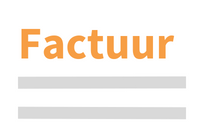 maestro
mastercard
visa
maestro
mastercard
visa

Data Protection Law in the EU: Roles, Responsibilities and Liability

EU data protection law imposes a series of requirements designed to protect individuals against the risks that result from the processing of their data. It also distinguishes among different types of actors involved in the processing, setting out different obligations for each actor. The most important distinction in this regard is the distinction between “controllers” and “processors”. Together, these concepts provide the very basis upon which responsibility for compliance with EU data protection law is allocated. As a result, both concepts play a decisive role in determining the potential liability of an organisation under EU data protection law, including the General Data Protection Regulation (GDPR).
Technological and societal developments have made it increasingly difficult to apply the controller-processor model in practice. The main factors are the growing complexity of processing operations, the diversification of processing, services and the sheer number of actors that can be involved. Against this background, this book seeks to determine whether EU data protection law should continue to maintain the controller-processor model as the main basis for allocating responsibility and liability.
This book provides its readers with the analytical framework to help them navigate the intricate relationship of roles, responsibility and liability under EU data protection law. The book begins with an in-depth analysis of the nature and role of the controller and processor concepts. The key elements of each are examined in detail, as is the associated allocation of responsibility and liability. The next part contains a historical-comparative analysis, which traces the origin and development of the controller-processor model over time. To identify the main problems that occur when applying the controller-processor model in practice, a number of real-life use cases are examined (cloud computing, social media, identity management and search engines). In the final part, a critical evaluation is made of the choices made by the European legislature in the context of the GDPR. It is clear that the GDPR has introduced considerable improvements in comparison to EU Directive 95/46. In the long run, however, further changes may well be necessary. By way of conclusion, a number of avenues for possible improvements are presented.
Dr Brendan Van Alsenoy is a Legal Advisor at the Belgian Data Protection Authority and a senior affiliated researcher at the KU Leuven Centre for IT & IP Law, and co-editor of Privacy & Persoonsgegevens. He has previously worked as a legal researcher at the KU Leuven Centre for IT & IP Law, with a focus on data protection and privacy, intermediary liability and trust services. In 2012, he worked at the Organisation for Economic Co-operation and Development (OECD) to assist in the revision of the 1980 OECD Privacy Guidelines.
Elektronische versie beschikbaar op :
- Strada lex België
Heeft u een abonnement? Activeer kosteloos de digitale versie dankzij de code in het boek.
| Producttype | Boek |
|---|---|
| Formaat | Hardback |
| EAN / ISSN | 9781780688282 / 9781780688459 |
| Reeksnaam | KU Leuven Centre for IT & IP Law Series |
| Gewicht | 1290 g |
| Beschikbaarheid | In voorraad |
| Aantal pagina's | xxv + 694 blz. |
| Toegang tot oefeningen | Nee |
| Uitgever | Intersentia |
| Taal | Engels |
| Publicatiedatum | 29 mrt. 2019 |
| Beschikbaar op Strada Belgique | Ja |
| Beschikbaar op Strada Europe | Nee |
| Beschikbaar op Strada Luxembourg | Nee |
Uittreksels
- Table of contents and preliminary pages
Brendan Van Alsenoy - Part I. Introduction
- Chapter 1. Background
Brendan Van Alsenoy - Chapter 2. Problem Statement
Brendan Van Alsenoy - Chapter 3. Research Questions
Brendan Van Alsenoy - Chapter 4. Structure and Methodology
Brendan Van Alsenoy - Part II. State of the Art
- Chapter 1. Introduction
Brendan Van Alsenoy - Chapter 2. Scope of EU Data Protection Law
Brendan Van Alsenoy - Chapter 3. Basic Protections
Brendan Van Alsenoy - Chapter 4. Allocation of Responsibility
Brendan Van Alsenoy - Chapter 5. Liability Exposure of Controllers and Processors
Brendan Van Alsenoy - Chapter 6. Specific Issues
Brendan Van Alsenoy - Chapter 7. Additional Functions of the Controller and Processor Concepts
Brendan Van Alsenoy - Part III. Historical-Comparative Analysis
- Chapter 1. Introduction
Brendan Van Alsenoy - Chapter 2. The Emergence of Data Protection Law
Brendan Van Alsenoy - Chapter 3. National Data Protection Laws Before 1980
Brendan Van Alsenoy - Chapter 4. International Instruments
Brendan Van Alsenoy - Chapter 5. National Data Protection Laws After 1981
Brendan Van Alsenoy - Chapter 6. Directive 95/46/EC
Brendan Van Alsenoy - Chapter 7. General Data Protection Regulation
Brendan Van Alsenoy - Chapter 8. Conclusion
Brendan Van Alsenoy - Part IV. Use Cases
- Chapter 1. Introduction
Brendan Van Alsenoy - Chapter 2. E-Government Identity Management
Brendan Van Alsenoy - Chapter 3. Online Social Networks
Brendan Van Alsenoy - Chapter 4. Cloud Computing
Brendan Van Alsenoy - Chapter 5. Internet Search Engines
Brendan Van Alsenoy - Part V. Recommendations
- Chapter 1. Introduction
Brendan Van Alsenoy - Chapter 2. Typology of Issues
Brendan Van Alsenoy - Chapter 3. Typology of Solutions
Brendan Van Alsenoy - Chapter 4. Recommendations
Brendan Van Alsenoy - Chapter 5. Conclusion
Brendan Van Alsenoy